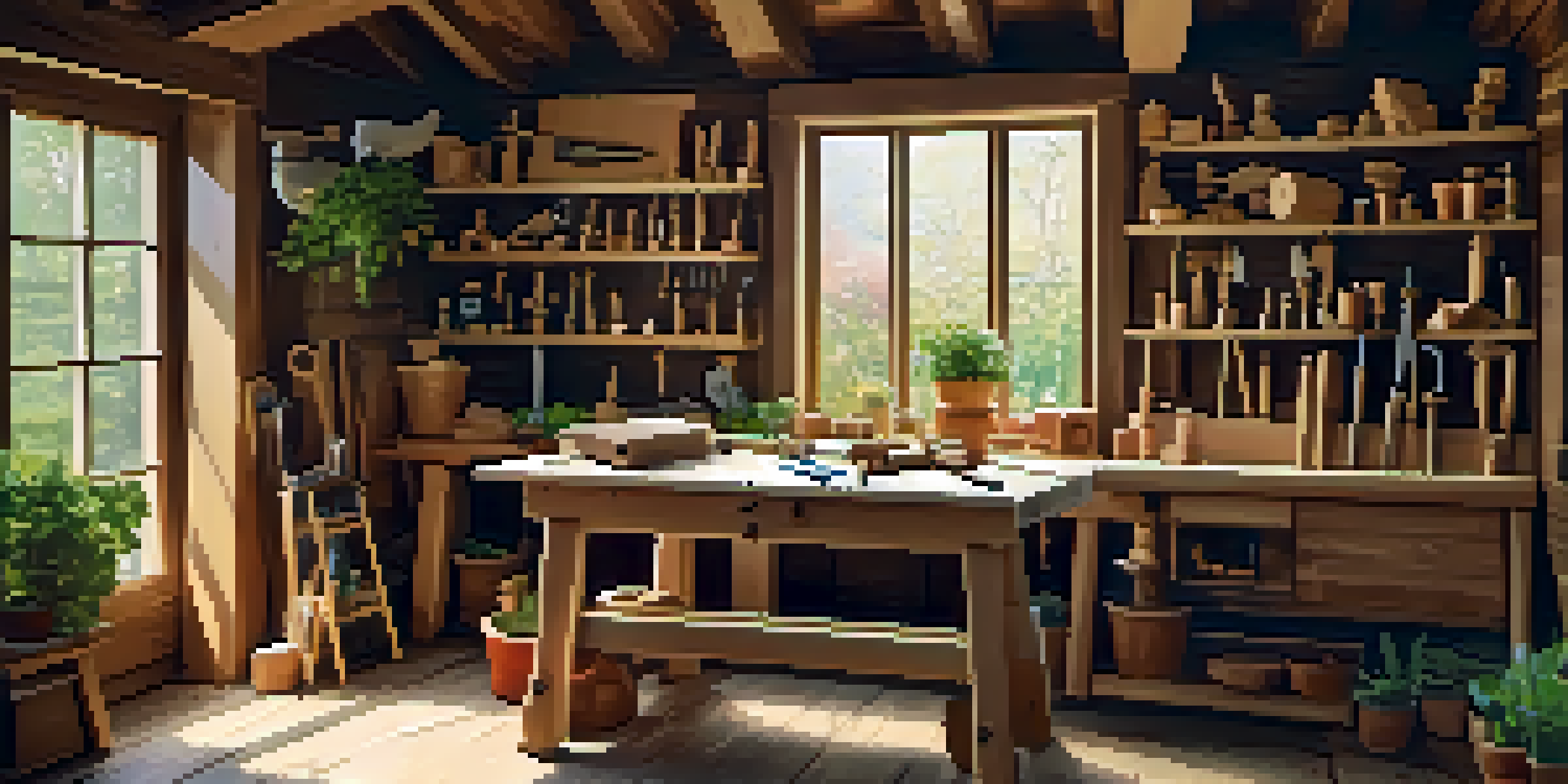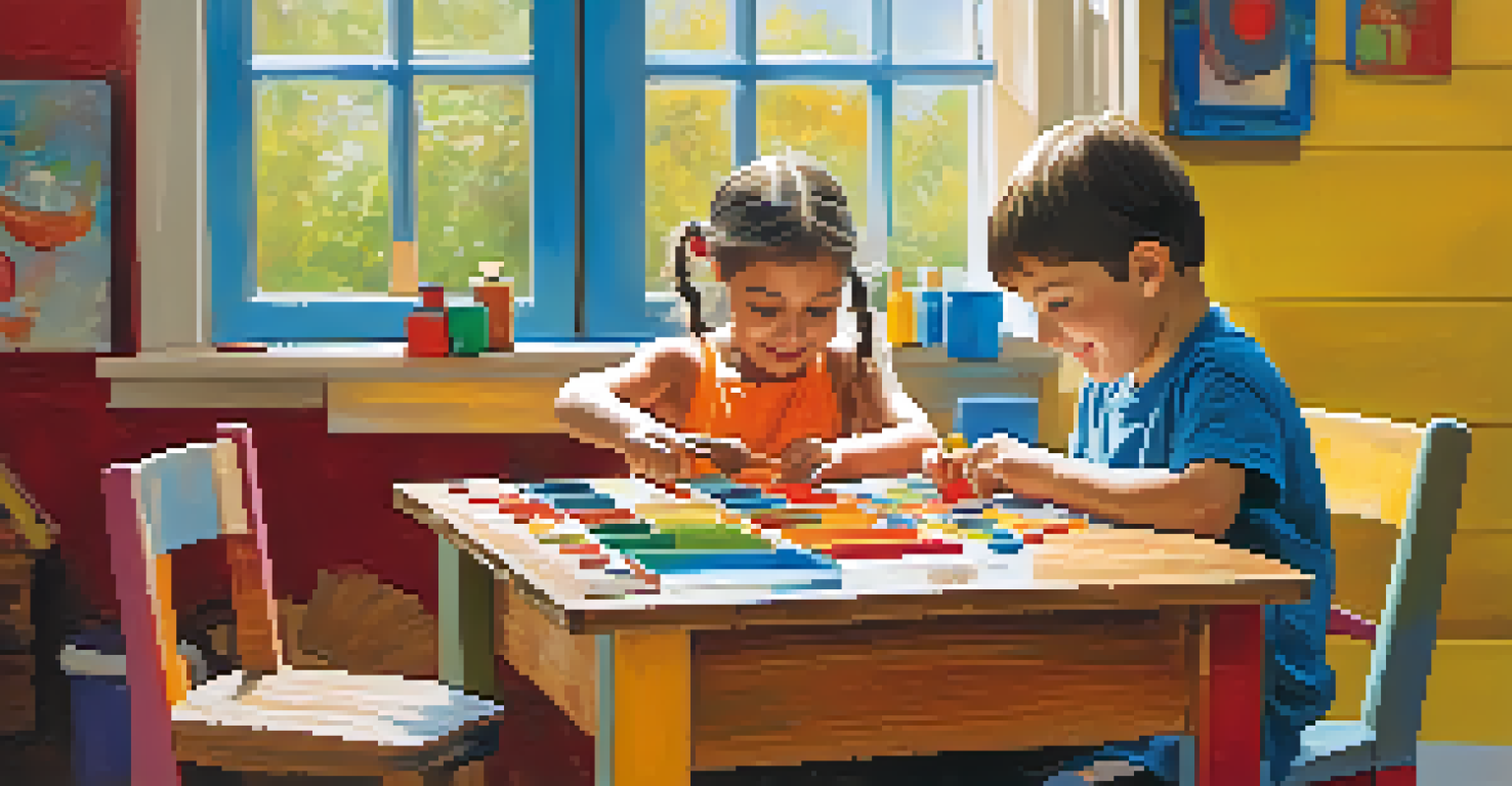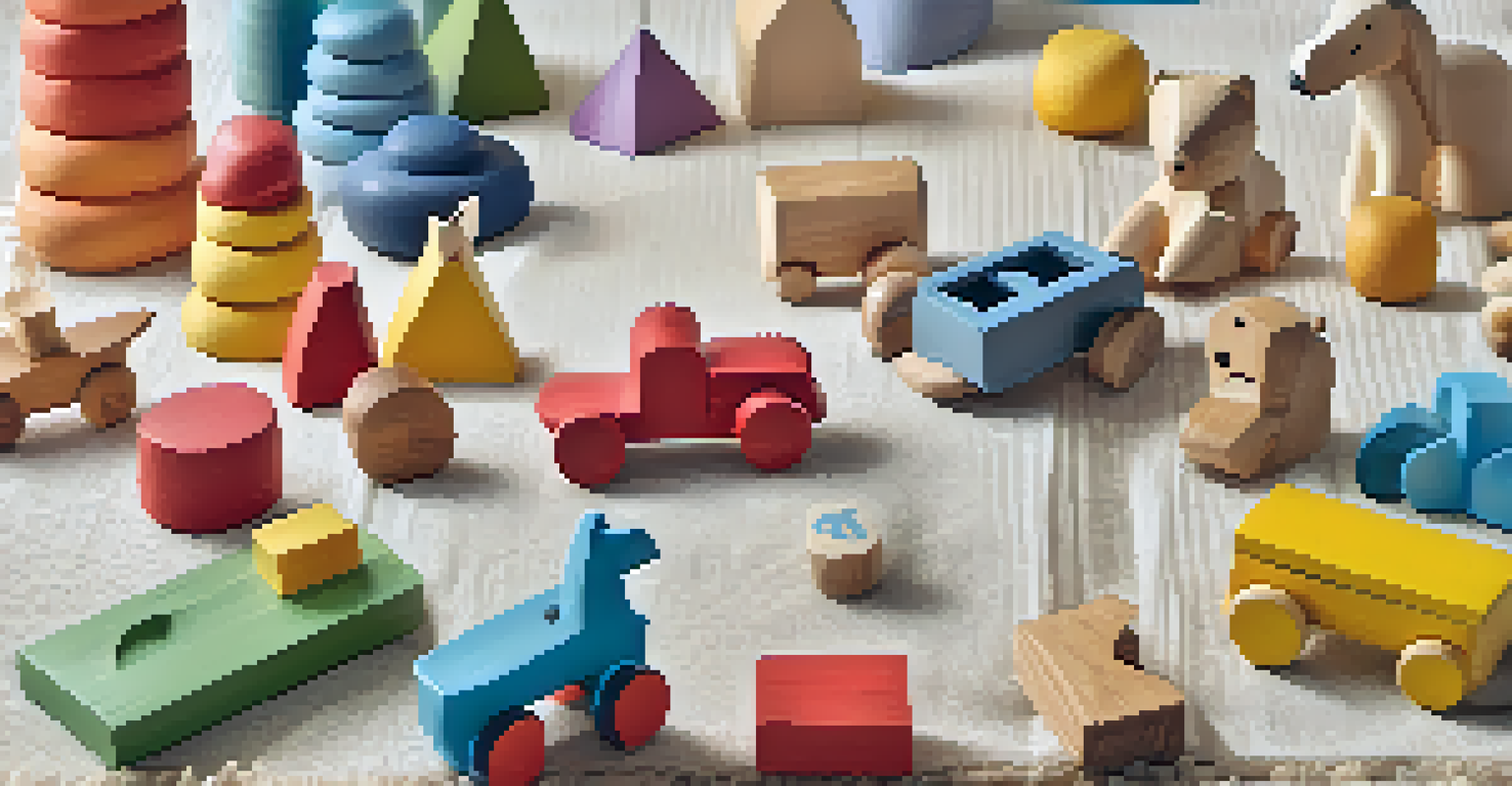Creating Wooden Toys: Safe and Fun Projects for Kids

Why Wooden Toys Are a Great Choice for Kids
Wooden toys have stood the test of time, captivating children for generations. They are not only durable but also encourage imaginative play, allowing kids to create their own narratives. Unlike plastic toys, wooden ones often have a tactile quality that engages children’s senses, fostering a deeper connection during play.
Play is the highest form of research.
Furthermore, wooden toys are usually made from natural materials, making them a safer option for kids. There are no harmful chemicals or sharp edges, especially when crafted carefully. This emphasis on safety and sustainability resonates well with parents who prioritize their children's health and the environment.
Plus, wooden toys can be personalized and customized, adding a unique touch that mass-produced plastic toys lack. Whether it's a hand-painted design or a special engraving, these personal elements can turn simple toys into cherished keepsakes.
Essential Tools for Creating Wooden Toys
Before diving into the world of wooden toy making, it's important to gather the right tools. Basic tools like a saw, sandpaper, and a drill will cover most of your needs. If you’re new to woodworking, consider starting with a simple hand saw and gradually investing in power tools as your skills grow.

Safety should be your top priority. Always wear safety goggles and a dust mask when working with wood to protect your eyes and lungs. Familiarize yourself with each tool's operation to avoid accidents, and don’t hesitate to ask for guidance from more experienced woodworkers.
Durable and Safe for Kids
Wooden toys are made from natural materials, making them safe and environmentally friendly while promoting imaginative play.
Additionally, having a dedicated workspace can make your projects more enjoyable. A clean, organized area with good lighting will help you focus and make the creative process smoother. A sturdy workbench is essential, as it provides stability while you craft your toys.
Choosing the Right Wood for Toys
Selecting the right type of wood is crucial when creating toys. Hardwoods like maple, oak, and cherry are excellent choices due to their durability and safety. These woods are less likely to splinter, ensuring a safer play experience for kids.
The best toys are those that engage a child's imagination.
Softwoods such as pine or cedar can also be used, but they may require extra care in finishing to avoid rough edges. It's important to sand down any sharp points and apply non-toxic finishes to enhance safety. Always check that the wood is sourced from sustainable practices, contributing to environmental responsibility.
Consider the toy's intended use when choosing your wood. If it’s for outdoor play, opt for woods that can withstand the elements. For indoor toys, aesthetics can play a bigger role, allowing you to select wood with beautiful grain patterns or colors.
Simple Wooden Toy Projects for Beginners
If you're just starting out, consider creating simple projects like a wooden car or a stacking block set. These toys require basic cuts and minimal assembly, making them perfect for novice woodworkers. Plus, they offer a great sense of accomplishment once completed.
A wooden shape sorter is another fun project that can challenge your skills while being educational for kids. By cutting various shapes and creating corresponding holes, you can teach children about colors and shapes while they play. This project allows for creativity in both form and function.
Essential Tools for Toy Making
Gathering the right tools and prioritizing safety are crucial steps for anyone looking to create wooden toys.
As you gain confidence, you can tackle more complex designs, like a wooden puzzle or a toy animal. These projects offer room for creativity and personalization, allowing you to truly express your artistic side while creating something special for children.
Safety Tips for Crafting Wooden Toys
Safety is paramount when working with tools and materials for children's toys. Always supervise children if they are involved in the crafting process, and emphasize the importance of following safety rules. This not only protects them but also instills a sense of responsibility.
Make sure to use non-toxic finishes and paints that are safe for children. Look for products labeled as child-safe or eco-friendly. This ensures that the toys remain safe for little ones to handle and play with, even if they end up in their mouths.
Finally, regularly inspect the toys for wear and tear. Wooden toys can last a long time, but they may require maintenance over the years. Check for any splinters or loose parts, and repair them promptly to keep playtime safe and enjoyable.
Engaging Kids in the Toy-Making Process
Getting kids involved in the toy-making process can be a rewarding experience for both you and them. Start with simple tasks, like choosing colors or helping with sanding. This not only teaches them valuable skills but also fosters creativity and a sense of ownership over the toys.
Encourage their imagination by letting them suggest designs or themes for the toys. This can lead to interesting conversations and bonding opportunities. For example, if they love animals, you might create wooden animal figures that they can paint and decorate themselves.
Developmental Benefits of Play
Wooden toys enhance fine motor skills and encourage open-ended play, fostering creativity and critical thinking in children.
Make it a family project! Set aside a weekend to work together on a toy-making session. This creates lasting memories and instills a love for crafting, as kids learn to appreciate the effort that goes into making their toys.
The Lasting Benefits of Wooden Toys
Wooden toys offer more than just fun; they come with numerous developmental benefits for children. Playing with these toys encourages fine motor skills as kids grasp, stack, and manipulate different shapes. This type of play is essential for their physical and cognitive development.
Additionally, wooden toys often promote open-ended play, allowing children to use their imagination creatively. Unlike electronic toys that dictate play patterns, wooden toys encourage kids to invent their own games and stories, fostering problem-solving and critical thinking skills.

Incorporating wooden toys into playtime can also lead to a more serene environment. The natural aesthetic of wood can create a calming atmosphere, contrasting with the overstimulation often caused by bright, plastic toys. This fosters a more focused and peaceful play experience.